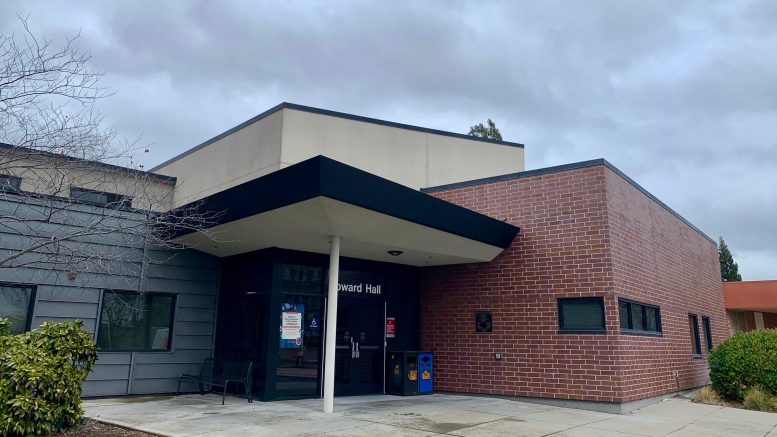By Myla Booth and Adoreil Ayoubgoulan
A new law will encourage students to enroll in regional community colleges by letting those institutions cancel student debt.
Many students face difficult decisions such as dropping out of college, paying their bills, or maintaining jobs. The Community College Student Access, Retention, and Debt Cancellation Program allows community colleges to use funds to provide financial incentives for students to sign up for classes, including debt cancellation. The bill requires officials to prioritize funding to schools with sharp enrollment declines.
The state has invested tens of millions of dollars into bringing students back to community college. Enrollment dropped by 320,000, or 19%, from fall 2019 to fall 2021.
“I think it has become hard for working parents to prioritize their education,” said Maddison Price, who recently transferred to Sacramento State from American River college. “For anyone working two jobs, less online and hybrid options now it’s harder for people to get to class, and get the work done.”
Price added that the pandemic had a major impact on her decision to go to community college before a four-year university. “I couldn’t justify paying $8,000 for online classes when I could pay $80,” she noted.
During community college, Price was able to still work two jobs. Her overall spending during her time at community college was about $600, including tuition, supplies, and books.
Many community colleges saw a huge decline in enrollment due to the COVID-19 pandemic. Sacramento resident Taylor Gilcrease dropped out of community college due to complications.
“I tried to go to a community college right out of high school, while it was free, but I was working two full-time jobs to pay bills and maintain a savings account,” Glicrease said. “I saw no point to continue doing poorly in school, and bills had to come first so I felt my hands were tied.”
The effects of the pandemic are likely a main reason for enrollment decline. Everyone had to go through a major transition from being in-person for classes to online.
“I think a lot of people do community college because of the flexibility it allows, but with the increase of online classes because of COVID why not take those same classes at Sac State or UCLA if you can,” observed Sacramento State junior Olivia Oatis. “No transportation needed, same flexibility, and bigger school name on the degree.”
Oatis, a transfer student at Sacramento State, believes that community colleges need to create more awareness of their benefits. She said she’s talked to many people that didn’t even know about the Promise program within California community colleges that often results in students getting fees waived.
“I think if community colleges focus on their marketing strategy, they would greatly benefit and possibly get that enrollment back up,” Oatis pointed out, adding she thinks education shouldn’t cost anything. She thinks her generation prioritizes mental health and survival first.
“If they’d like people to continue to go to college and not skip to entrepreneurship and other things, then they need to fix the system,” Oatis suggested. “And I’m glad they are trying too finally.”
Gabe Ross, Chief Strategy and Communications Officer at Los Rios Community College District, said his institution is supportive of any policy that makes college more affordable for students and helps to break down the financial barriers to student success.
Los Rios has been in full support of getting students enrollment back on track with separate federal funding to remove student debt. “The local implementation, however, is not sustainable without an ongoing funding source, so AB 1958 – if funded by the legislature – would be welcome and supported by Los Rios,” said Ross.
Laura De La Garza Garcia is a senior at Sacramento State who transferred from a community college in 2019. She believes that community colleges should do outreach more to high school seniors about the two-year program that they have.
“The bill is good,” De La Garza Garcia said, “and this should be all around not just community college, which sucks because if we see the change being implemented in community college, it should also be in higher education like CSU or UC.”


waive student debt